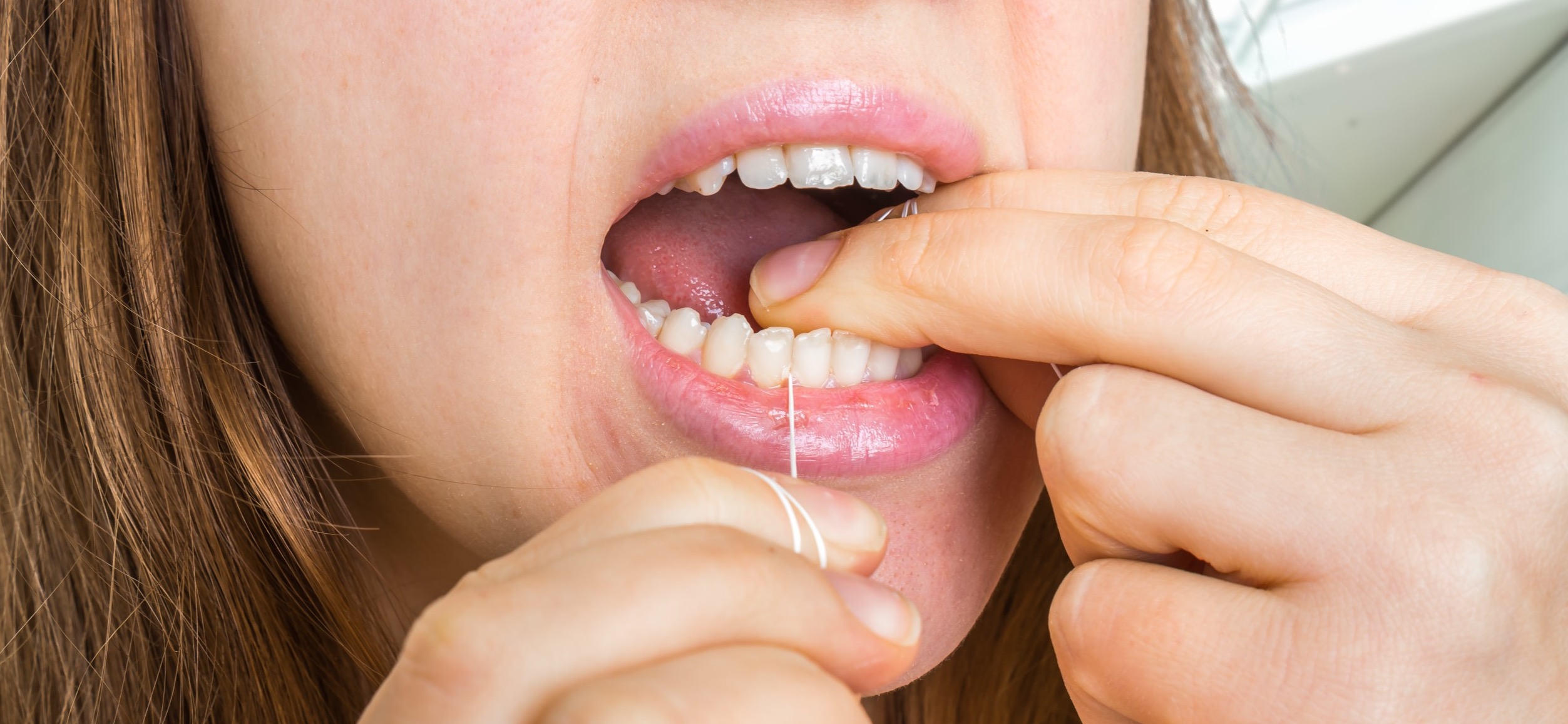Your dentist can go on ad nauseum about the importance of flossing. But when was the last time your dentist actually showed you how to floss properly? Do you really know the correct way to floss your teeth?
A lot of people think of flossing as an afterthought, but it’s more important than you might think. The space between your teeth is the perfect hiding spot for plaque. Plus, the area between the base of your gums and your teeth is where a lot of plaque hides.
Is Flossing Necessary?
If you want to keep your teeth and oral health in good shape for years to come, flossing is not optional — it’s mandatory! Flossing does two things: it stimulates your gums, and it removes hard-to-reach plaque.
Stimulates Gums
Stimulating your gums helps keep them strong and improves blood circulation to your gums. It also delivers more oxygen to the area, which can help your gums fight off infections. Weak gums are more prone to gum disease.
Removes Hard-to-reach Plaque
A tooth has 5 surfaces; if you are not flossing you are missing at least 2 of those surfaces. This is because your toothbrush can only clean the outer surfaces of your teeth. Flossing removes plaque between the teeth where your toothbrush can’t reach.
Signs You Aren’t Flossing Properly
Here are some common tell-tale signs that you aren’t flossing properly (or not flossing at all!).
Bleeding Gums
Bleeding gums signify gingivitis, the first stage of gum disease. Your gums are weak and aren’t used to stimulation. If you’re bleeding profusely, it’s best to check in with a dentist.
Red, Sensitive, Painful Gums
If your gums aren’t stimulated often, they become weak. When your gums become weak, they’re more susceptible to bacteria and plaque. If your gums look red and feel sore when you floss, they’re not used to being stimulated.
Sudden Gaps Between Teeth
Gingivitis can cause your teeth to shift slightly, creating new gaps you didn’t have before. Inflamed gums tend to pull away from the teeth, leaving gaps between the teeth.
Bad Breath
If your tongue scraping and brushing routines are on-point but you still have bad breath, it could be due to lack of flossing.
Are you finding any of these in your teeth? Not to worry–we’ll show you how to floss properly! But first, let’s explore the no-no’s of flossing.
Common Flossing Mistakes
There are three common flossing mistakes: snapping the floss between your teeth, not using enough floss, and stopping when you see bleeding.
Snapping
When you forcefully pull the floss straight down between the teeth (snapping), you not only damage your gums, but you also don’t get the job done. The point of placing floss between your teeth is to clean the in-between areas of your teeth where plaque hangs out. Use the floss to scrape off the residual plaque.
Not Using Enough Floss
It’s important to always use a clean section of floss for each tooth. When you don’t use enough floss, you end up using the same dirty section over and over on your teeth. This spreads around the bacteria instead of removing it. Make sure to cut a piece that’s 18-24 inches long.
Stopping When You See Bleeding
Let’s be honest, bleeding gums freak people out. But here’s the thing: if your gums start bleeding when you floss, don’t stop. It simply means you’re not flossing enough, and you need to do it more often! Think of your bleeding gums saying, “THANK YOU!! More of that, please!” Using a soft floss like Smart Floss that is gentle on your gums will help mitigate the bleeding.
How To Floss Properly
Flossing your teeth properly means using the floss to scrape plaque off of the inner parts of your teeth and gumline, where plaque tends to hide. Let’s look at how to floss properly step-by-step.
- Cut a piece of floss that’s 18-24 inches long.
- Gently slide the piece of floss down between the teeth to the base of the gums, below the gumline.
- Wrap the floss tightly around the tooth in a C-shape. Holding tightly, move the floss gently up and down the tooth a few times to remove plaque.
- After flossing each tooth, use a clean section of the floss, and carry on until you’re all done.
How To Floss Properly With Braces
Flossing with braces is a little bit trickier because you have wires stopping you from moving the floss up and down the entire length of the tooth. If you’re not careful, you can break the wire. Flossing with braces requires extra patience, but it’s more important than ever to floss properly if you have braces.
To floss with braces, feed the piece of floss between the teeth above and below the wire. Then, floss as normal, wrapping the floss tightly around the tooth in a C-shape, with up and down motions.
If you’re having trouble feeding the floss between your teeth, use a threader. A threader is a little device that functions similar to a sewing needle. To use, loop your floss onto the hoop, and send the sharp part between your teeth.
How Often Should You Floss?
Floss at least once daily. Flossing comes second in the Ecosentials routine, right after tongue scraping.
Can You Over Floss?
While there’s no limit on how often you can floss, flossing incorrectly can damage your gums. Forcing the floss down between tight teeth (called snapping) can impact your gums, causing gum recession and pain. Be patient! Gently slide the floss down between your teeth to avoid impact on your gums.
The Takeaway
You may be hesitant to floss your teeth for fear that it will cause your gums to bleed and hurt. In fact, the opposite is true! Your gums bleed when you aren’t flossing enough. While you may have some bleeding and soreness from flossing if you haven’t done it in a while, it won’t last long.
We hope this article gives you the confidence to know how to floss properly. It’s not as daunting as you might think!
Looking to upgrade your flossing routine? Our Smart Floss expands to reach all those nooks and crannies, making proper flossing a breeze. The soft, expandable floss is gentle on the gums and softer on the fingers. All this and a delicious cardamom flavor will make you actually look forward to flossing your teeth.
If you’re looking for a vegan dental floss option, try our Activated Charcoal Floss!








